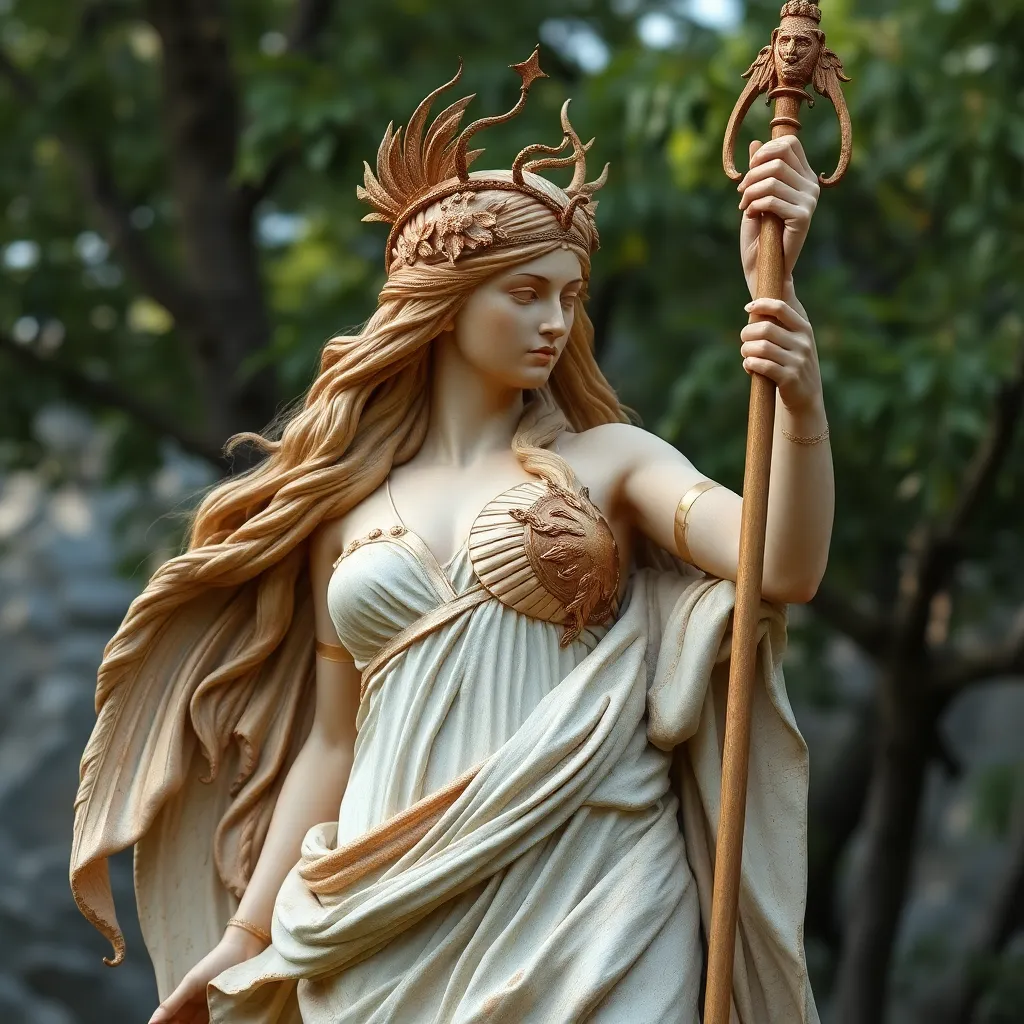Artemis and the Influence of Nature on Greek Mythology
I. Introduction
Artemis, one of the most revered deities in Greek mythology, embodies the essence of nature, wildlife, and the primal forces of the wilderness. As the goddess of the hunt, she represents not only the strength and independence associated with the natural world but also the nurturing aspects of femininity and motherhood. The significance of nature in Greek mythology is profound, influencing various tales, rituals, and societal norms. This article explores the intricate connection between Artemis and the natural world, revealing how her myths reflect humanity’s relationship with nature.
II. The Role of Artemis in Greek Mythology
Artemis is depicted as a multifaceted goddess with various attributes and symbols. Commonly associated with the moon, wilderness, and hunting, she is often portrayed carrying a bow and arrows, symbolizing her prowess in hunting and her role as a protector of the wild. Her symbols include:
- The bow and arrows
- The deer
- The crescent moon
- The hunting dog
As the goddess of the hunt, wilderness, and childbirth, Artemis holds a unique position among the Olympian deities. She is the twin sister of Apollo, the god of the sun, and their relationship highlights the balance of light and dark, nurture and destruction. Artemis not only protects young women and animals but also represents the fierce, untamed aspects of nature.
III. Nature as a Central Theme in Artemis’ Myths
Artemis is central to many myths that emphasize the significance of nature. In her stories, the natural world plays a crucial role, often serving as both a sanctuary and a battleground. Key myths include:
- The Calydonian Boar Hunt, where Artemis sends a monstrous boar to punish King Oeneus for neglecting her in his offerings.
- The story of Actaeon, a hunter who stumbles upon Artemis bathing and is transformed into a stag, resulting in his own hunting dogs tearing him apart.
- Her protection of the nymph Callisto, who is transformed into a bear and later placed among the stars as the constellation Ursa Major.
These myths highlight the significance of forests, animals, and the wilderness in Greek culture, reflecting humanity’s dependence on and reverence for nature. They serve as reminders of the balance required between man and the natural world.
IV. Artemis and the Worship of Nature
The worship of Artemis was deeply intertwined with nature, as many rituals and practices were dedicated to her in sacred groves and natural sites. Temples dedicated to Artemis were often located in lush forests or near bodies of water, emphasizing her connection to the earth.
Rituals included:
- The Brauronia, a festival where young girls would dress as bears and participate in rites to honor Artemis.
- Processions to sacred groves where offerings of flowers, fruits, and animals were made.
- Hunting expeditions that celebrated her role as the goddess of the hunt, reinforcing the bond between the community and nature.
These festivals not only celebrated Artemis but also highlighted the importance of nature in the lives of the ancient Greeks, reflecting their values and beliefs.
V. Symbolism of Animals in Artemis’ Lore
Artemis is closely associated with various animals, particularly those that symbolize both the beauty and ferocity of nature. Animals such as:
- Deer, representing grace and femininity
- Bears, symbolizing nurturing and strength
- Wolves, representing the wild and untamed aspects of nature
These animals carry deep symbolic meanings in Greek culture. The deer, for instance, was considered a sacred animal to Artemis, representing purity and the connection between the goddess and the wilderness. The bear symbolizes both maternal instincts and the fierce protection of the young, while wolves reflect the balance of predation and survival in nature. This symbolism underscores the values of society, emphasizing respect for the natural world.
VI. The Duality of Nature: Nurturer and Destroyer
Artemis embodies the duality of nature, serving as both a protector of wildlife and a figure of vengeance. While she nurtures and safeguards the natural world, she also demonstrates its darker aspects, such as wrath and retribution. Her role as a protector is evident in her fierce defense of young women and animals, while her vengeful side is illustrated in myths like that of Actaeon.
Case studies of this duality include:
- The story of Niobe, who boasted about her children, leading Artemis to kill them as punishment.
- The transformation of Actaeon, who, after seeing Artemis naked, becomes prey to his own dogs, showcasing the consequences of disrespecting her.
These myths illustrate how Artemis embodies the complexities of nature, serving as a reminder of the balance between reverence and fear associated with the natural world.
VII. Influence of Artemis on Later Cultural Representations
The legacy of Artemis extends beyond Greek mythology into Roman culture and modern interpretations. In Roman mythology, she is known as Diana, retaining many of her attributes and associations with the moon and hunting. Over the centuries, Artemis has inspired countless works of literature, art, and popular culture.
Modern representations include:
- Literary works that explore themes of femininity and nature, often drawing parallels with Artemis.
- Artistic depictions in paintings and sculptures that highlight her connection to wilderness and wildlife.
- Films and television shows that feature characters inspired by her qualities of independence and strength.
Artemis’ enduring connection to nature continues to resonate, reminding contemporary society of the importance of preserving the natural world.
VIII. Conclusion
Artemis stands as a powerful symbol of nature’s influence in Greek mythology, representing both the nurturing and destructive aspects of the natural world. Her myths and the rituals surrounding her worship highlight humanity’s deep connection to nature and the values inherent in that relationship. As we reflect on Artemis’ impact on contemporary society, it becomes clear that her legacy continues to inspire reverence for nature and underscores the importance of its preservation. The enduring presence of Artemis in our cultural consciousness serves as a reminder of the delicate balance between humanity and the natural world.




